Connection between heat exchange tubes and tube plates
Five types of connection structure between heat exchange tube and tube plate
There are five types of connection structure between heat exchange tube and tube sheet, and the connection between steel tube and tube sheet is an important part in the design of shell and tube heat exchanger. It not only has a large amount of processing work, but also must make every connection in the operation of the equipment to ensure that there is no leakage of the medium and the ability to bear the medium pressure.

For the connection structure of heat exchange tube and tube plate, there are five main types: (1) expansion joint, (2) welding, (3) expansion joint, (4) inner hole welding, (5) explosive expansion joint. In addition to the inherent characteristics of their own structure, these forms have a certain relationship with production conditions and operation technology in processing.
1 Expansion joint
It is used in the case that the leakage of medium between the shell and tube will not cause adverse consequences, the expansion joint structure is simple, and the repair of heat exchange tube is easy. Due to the plastic deformation and the existence of residual stress, the residual stress gradually disappears with the rise of temperature, which makes the sealing and bonding force at the tube end lower. Therefore, the expansion structure is limited by pressure and temperature. Generally, the applicable pressure P0 ≤ 4MPa, and the limit temperature of the residual stress disappearance at the pipe end varies with the material. For carbon steel and low alloy steel, when the operating pressure is not high, the operating temperature can reach 300 ℃. In order to improve the quality of tube expansion, the hardness of tube sheet material is required to be higher than that of tube end, so as to ensure the strength and tightness of expansion joint.
For the roughness of the joint surface, the pore size between the heat exchange tube hole and the heat exchange tube also has a certain impact on the quality of the expanded tube. For example, if the joint surface is rough, it can produce greater friction force, and it is not easy to pull off after expansion. If it is too smooth, it is easy to pull off, but it is not easy to produce leakage. The general roughness requirement is Ra12.5. In order to ensure that there is no leakage on the joint surface, no longitudinal groove mark is allowed on the joint surface.
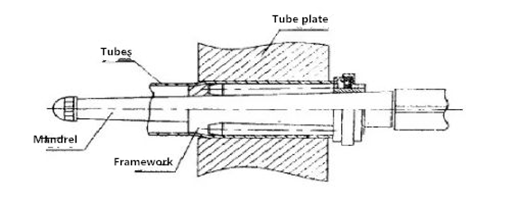
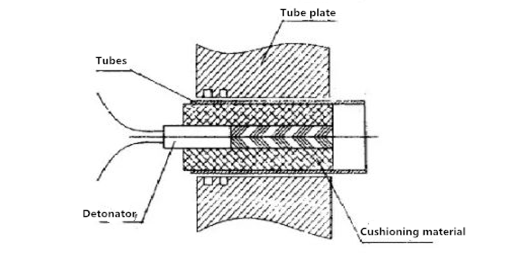
The smooth hole structure is used for heat exchanger with better material properties. The expansion depth is the thickness of tube sheet minus 3mm. When the thickness of tube sheet is greater than 50mm, the expansion depth e is generally taken as 50mm, and the extension length of tube end is 2-3mm.
When expanding, the tube end is expanded into a conical shape. Due to the effect of flanging, the tube and tube plate can be combined more firmly, and the ability of tensile force is higher. When the tube bundle bears the pressure stress, the flanging structure is not used.
The purpose of slotting pipe hole is similar to flanging of pipe mouth, which is mainly to improve the tensile force and sealing performance. Its structure is to open a small circular groove in the pipe hole, the groove depth is generally 0.4 ~ 0.5mm, when expanding the pipe, the pipe material is squeezed into the groove, so the medium is not easy to leak. The number of grooves in the pipe hole depends on the thickness of the pipe plate. When the pipe plate is less than 30mm, one groove shall be opened, and when the pipe plate thickness is ≥ 30mm, two grooves shall be opened.
The expansion joint depth is determined by the full expansion type and the non expansion type. When the tube sheet adopts the incomplete expansion type, when the tube sheet thickness is greater than 50 mm, the expansion joint depth is still 50 mm.
The tube sheet is made of composite steel plate. There are two kinds of slotting positions. When the cladding is thin, the slotting positions are all on the base layer. If the cladding is thick, a slot can be opened on the composite layer, but it is not allowed to open the slot between the cladding and the base layer.
2 Welding
At present, the welding of heat exchange tube and tube sheet is widely used, because the tube hole does not need to be slotted, and the roughness of the tube hole is not high, and the end of the heat exchange tube does not need to be annealed and polished, so the manufacturing and processing is simple. The welding structure has high strength and strong tensile force. When the welding part leaks, it can be repaired and welded. If the pipe needs to be replaced, the special cutter can be used to dismantle and weld the broken pipe, which is more convenient than dismantling the expanded pipe.
For the welding of heat exchange tube and tube plate, the shear section of the weld shall not be less than 1.25 times of the pipe section.
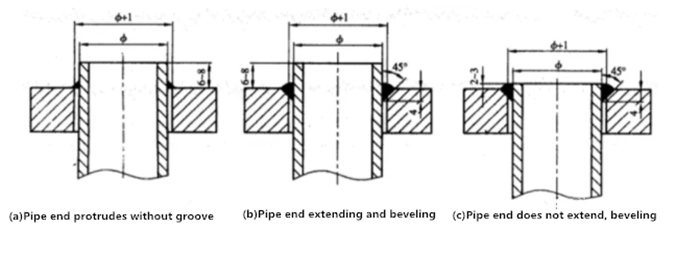
Stainless steel pipe and tube plate are generally welded, regardless of their pressure and temperature. In order to avoid the stagnation of fluid on the tube sheet, compensate the pressure loss at the tube inlet and reduce the resistance of the tube orifice, the tube can be shrunk in a certain position inside the tube sheet hole. However, this structure requires high welding technology. Generally, automatic argon arc welding machine is required to ensure the quality. During the welding process, the tube orifice is easy to be blocked, especially for small diameter tubes, Attention shall be paid during welding. Sometimes in order to reduce the welding stress, the concave groove surface can be machined down at the orifice of the tube sheet. This structure is generally used for the welding of stainless steel and tube sheet. Grooving around the pipe hole is troublesome to process and requires a lot of work. At present, the groove has been removed in the construction.
3 Expansion welding combination
For the medium with high pressure, strong permeability, or corrosive on one side, in order to ensure that the material on the other side will not be polluted after leakage, it is required that the joint between the heat exchange tube and the tube plate shall not leak, or in order to avoid the impact of vibration on the weld during shipment and operation, or to avoid the possibility of crevice corrosion, etc.
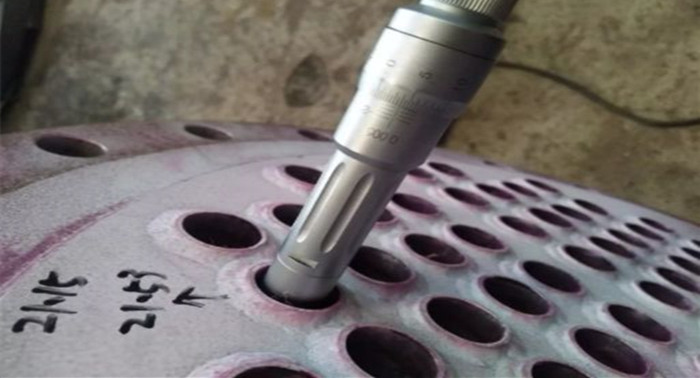
From the perspective of processing technology, the structure of expansion welding combination has several forms, such as expansion before welding, expansion after welding, expansion after welding and sticking expansion.
Expanding before welding and expanding the pipe before welding can improve the fatigue resistance of the weld. After expanding the pipe, the pipe can avoid clinging to the hole wall of the tube plate, which can prevent cracks during welding. However, when the pipe is expanded due to the use of lubricating oil, it enters into the joint gap. These residual oil stains exist and the air in the gap is heated and expanded to gasify. Under the action of high temperature in the process of welding joint, gas is generated and escapes from the welding surface, resulting in porosity in the weld joint, which seriously affects the quality of the weld joint. Therefore, these residual oil stains must be cleaned before welding.
Welding before expansion: the above phenomenon can be eliminated by welding before expansion, but the weld cracking may be caused by welding before expansion. In order to prevent the occurrence of this phenomenon, in addition to the proper operation control during the expansion, the distance between the first groove and the surface of the tube sheet should be considered larger, about 16 mm, and the expansion joint should not be carried out within the range of 10-12 mm from the surface of the tube sheet, so as to avoid damage to the weld during the expansion. The advantage of welding before expanding is that there is no need to clean up the residual oil stain after expanding the pipe, but the position of expanding the pipe after welding is required to be high. It must be ensured that the expansion joint is not carried out within the range of 10-12 mm, otherwise the weld will be damaged easily.
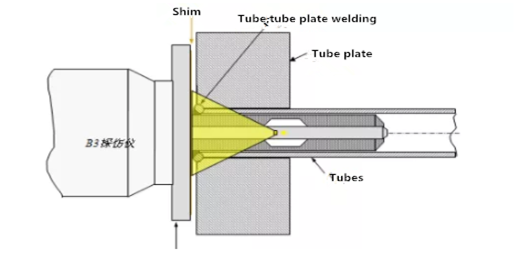
Expansion before welding or welding before expansion. For the welding part, there are differences between seal welding and strength welding. For the expansion part, there are differences between strength expansion and sticking expansion. For example, the structure of the combination of expansion joint and seal welding is to bear the force of expansion joint, while the seal welding ensures the tightness. The height of seal welding is generally 1-2 mm, which will not affect the expansion joint strength, but the oil stain at the joint must be cleaned during welding. The structure combining strength welding and expansion (sticking expansion) is to bear the force by welding, and the purpose of sticking expansion is only to eliminate the gap between the pipe and the tube plate, so as to prevent the gap from being eroded by corrosive medium.
Expansion and expansion after welding: expansion and expansion after welding are generally used on heat exchange equipment with high pressure. The welding part is to strengthen sealing welding, and the welding waist height is 2.8 mm. The expansion part bears the force. When expansion fails, strengthening sealing welding can bear the force. The expansion part is to eliminate crevice corrosion.
Under what conditions is the structure combined with welding and expansion adopted, there is no uniform regulation at present, but it is generally preferred to weld before expansion. At present, due to the different processing technology and equipment conditions of each manufacturer, they are used to the production method of our factory.
4 Inner hole welding
Inner hole welding is a butt structure formed by the hole of heat exchange tube on the shell side. Special welding equipment is needed for butt welding of heat exchange tube and its. Inner hole welding is a form of butt weld formed by the tube sheet and heat exchange tube after processing. Special equipment is needed to weld the welding gun from the tube sheet side to the weld (from the original joint to the butt joint), optimize the stress state at the joint of heat exchange tube and tube sheet, and greatly reduce the edge stress. It is very practical for heat exchanger with stress corrosion or interstitial corrosion medium.
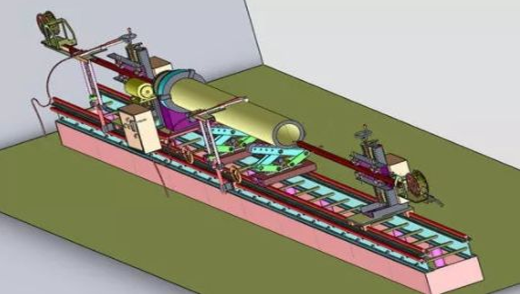
However, the internal hole welding requires high level of welding technology and is difficult to repair, which will lead to the scrapping of the whole heat exchanger. In order to ensure that the welding is qualified, it is necessary to carry out welding and testing in strict accordance with the construction process parameters.
5 Explosive expansion
The explosive expansion joint method is adopted for the connection of heat exchange tube and tube plate, which has been adopted in foreign countries. This is a new technology developed in recent years. Because of the explosive expansion joint densified seal welding or strength welding method, not only the connection strength is high, but also the expansion joint efficiency is greatly improved. There is no need of lubricating oil during explosive expansion, and there is no oil stain at the end of heat exchange tube, which is good for welding after expansion.
Explosive expansion is to use explosives, in a very short period of time, under the action of high-pressure gas shock wave inside the tube, deformation occurs, so that the tube can avoid firmly clinging to the tube plate hole. The explosive expansion joint is applicable to the expansion joint of thin-walled tube, thick walled small diameter tube and large thickness tube plate. The advantages of explosive expansion joint are large tensile force, small axial elongation and deformation of the pipe. When the pipe end leaks, when it can not be repaired by mechanical expansion, the repair effect of explosive expansion joint is very good.
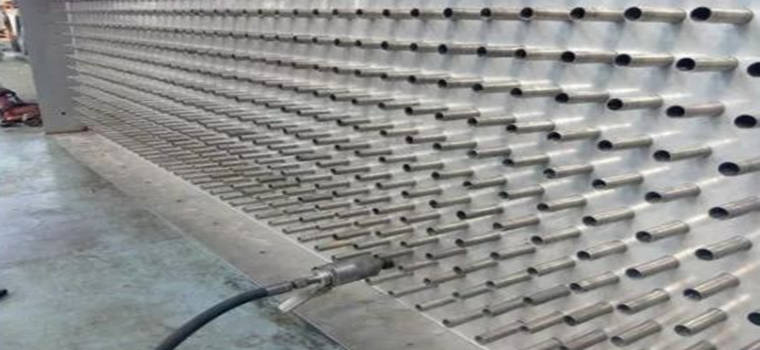

![field:title/]](/uploads/220425/1-22042511053I30.jpg)
![field:title/]](/uploads/220414/1-220414214051492.jpg)
![field:title/]](/uploads/211104/1-211104121004V0.jpg)
![field:title/]](/uploads/211102/1-21110215254UP.jpg)
![field:title/]](/uploads/210923/1-2109231045325B.png)
![field:title/]](/uploads/200915/1-2009151K634949.jpg)
![field:title/]](/uploads/210813/1-210Q31QA0b0.jpg)
![field:title/]](/uploads/210629/1-2106291U944F9.jpg)